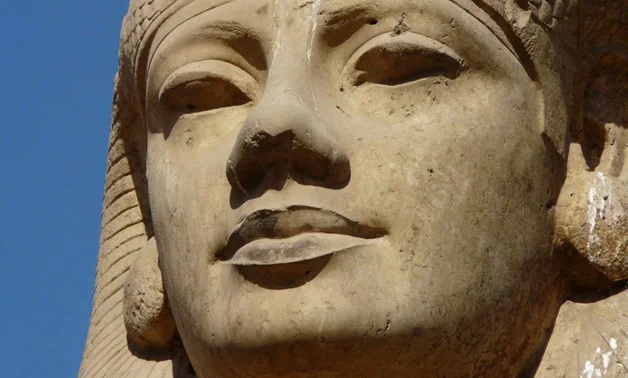Archaeologists find tomb of Egypt’s first queen
New excavations at the tomb of ancient Egyptian queen Meret-Neit have uncovered riches that suggest she may have been Egypt's first female ruler, archaeologists say. But some experts doubt whether he actually reigns. Although Meret-Nate's tomb was discovered in 1900, recent excavations show that the queen's monumental tomb is filled… Archaeologists have uncovered riches that suggest that ancient Egyptian queen Meret-Neit may have been Egypt's first female ruler, but some experts doubt whether he actually reigns. The queen's monumental tomb is filled with hundreds of jars containing 5,000-year-old grape seeds and other grave goods fit for royalty, and inscriptions found in a tomb at Abydos in Middle Egypt also show that Mereth-Nate played an important role in the treasury and held other government positions around 3000 BC. The burial complex contains the tombs of 41 courtiers and servants and is made of adobe, clay and wood in various stages of construction. Some experts believe that Merenth-Neath has the same powers as male kings, based on the previously found list of rulers and other clues. However, Elizabeth Carney, history professor emeritus at Clemson University in South Carolina, agrees that it would have been really impressive if you had a female king in the first dynasty.

Publicerad : 2 år sedan förbi Emma i Science
New excavations at the tomb of ancient Egyptian queen Meret-Neit have uncovered riches that suggest she may have been Egypt’s first female ruler, archaeologists say. But some experts doubt whether he actually reigns.
Although Meret-Nate’s tomb was discovered in 1900, recent excavations show that the queen’s monumental tomb is filled with hundreds of jars containing 5,000-year-old grape seeds (essentially well-preserved wine remains) and other grave goods fit for royalty. According to the statement.. Inscriptions found in a tomb at Abydos in Middle Egypt also show that Meret-Neit played an important role in the treasury and held other government positions around 3000 BC. is.
Burial complex of Queen Meret-Neit at Abydos during excavations.
The queen’s burial chamber is located in the center of the complex and is surrounded by secondary graves of courtiers and servants.(Image credit: EC Köhler)
“It’s probably a very important tomb,” said Ronald Leprochon, professor emeritus of Egyptology at the University of Toronto, who was not involved in the recent excavations.
Meret-Nate, whose name means “beloved of the goddess Nate”, was the wife of King Jet, the third king of the first dynasty of ancient Egyptian rulers, and the mother of his heir, King Dan, according to Leprochon. The burial complex contains the tombs of 41 courtiers and servants and is made of adobe, clay and wood in various stages of construction. Leprokhon said the previous finding showed that the queen’s name appeared after her son’s name in the list of rulers found in her tomb at Saqqara, followed by the title “mother of the king”, suggesting that she ruled as regent during Dan’s youth.
The leprochon said it might explain why his regent was buried so ostentatiously in the royal cemetery at Abydos. “The fact that his name has been added to the list of kings indicates that something extremely important has happened to Mereth-Nate,” he said.
What exactly happened remains a mystery, said Christiana Koehler, an archaeologist and professor of Egyptology at the University of Vienna in Austria, who oversaw the excavations at Abydos. “There’s really a lot of debate among Egyptologists because the evidence is not completely conclusive,” Koehler said.
Some experts believe that Mereth-Nate has the same powers as male kings, based on the previously found list of rulers and other clues. “No other Early Dynastic queen had so many royal privileges,” wrote Jean-Pierre Patznik, an Egyptologist at Sorbonne University in France who was not involved in the recent excavations, in the Proceedings of the Seventh Conference of European Egyptologists. (Archaeopress Publishing House, 2017). “Meret-Nate became the first female pharaoh in history.”
Others are not so sure, arguing that women rarely ruled in ancient Egypt, especially in this early period.
“Wives and daughters were generally not valued in terms of royal succession,” said Margaret Maitland, chief curator of ancient Mediterranean collections at the National Museum of Scotland. Maitland, however, said new evidence showed Mereth-Neath had “an unusually high level of authority for a royal woman”.
Elizabeth Carney, history professor emeritus at Clemson University in South Carolina, agrees. “It would have been really impressive if you had a female king in the first dynasty,” she said.
Leprochon said Meret-Neit was probably not considered a “pharaoh” even though he had ruled Egypt 5,000 years ago. The term, which means “great house” in ancient Egypt, probably came into use much later and referred to the rulers of the 18th Dynasty (circa 1550 to 1295 B.C.), he said.
“An educated guess from one of our colleagues is that Hatshepsut first used the term ‘Great Household’ to refer to a ruler because the term was gender-neutral,” Leprokhon said. said. He added that therefore calling ancient Egyptian rulers before Hatshepsut “Pharaohs” may be an anachronism.
The question of the ancient queen’s status and influence forms “the basis of our current research project on the tomb of Queen Meret-Neit at Abydos,” Koehler said. “I’m sure we’ll know more when we finish excavating this huge complex.” Source
Ämnen: Egypt
